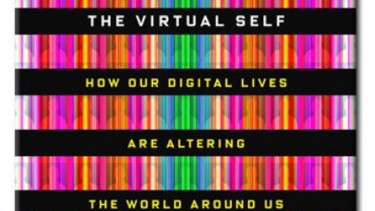The Virtual Self: How Our Digital Lives Are Altering The World Around Us
McClelland and Stewart
$19.95, 229 pages
Reviewed by Jenny Aitken
Nora Young is a well-known Canadian broadcaster and writer who lives in Toronto and hosts CBC Radio One’s Spark, a program that focuses on how technology affects the world around us. In 2012, she released the book The Virtual Self: How our Digital Lives Are Altering The World Around Us, which has since gone on to become a national bestseller. She also visited the University of Victoria recently to discuss the implications of technology with students.
In The Virtual Self, Young explores the concept of self-tracking and how technology is changing the way people manage and register information. Using examples that range from Benjamin Franklin’s journal entries to the social media posts that helped pinpoint the location of a pipe-bomb in 2010, Young identifies different methods of self-tracking that increase self-awareness and make people more accountable for the way they spend their time.
One thread of this self-tracking relates to weight management. As Young explains, the web is rich with services to help people lose weight and stay fit through recording diet and exercises. In the book, Young identifies several technologies that are helping people shed pounds, such as FitBit, a small wrist monitor that tracks calories, exercise and even sleep by using 3-D motion sensors. There are also countless websites, such as FitDay.com, dedicated to giving specific information about the nutritional information for different foods in order to make it easier to keep tabs on how many calories users consume in a day.
Although Young discusses the benefits of these technologies, she acknowledges the concern that if people are too vigilant about their tracking, the danger is that “sources of bodily delight and physical expressiveness, such as running or eating a meal, are reduced to stats driven, objectified activities.” By demonstrating the positives as well as the negatives of these budding technologies, the reader is given a comprehensive look at the technological tools available today.
I appreciated that Young not only describes these technologies, but also tries them herself, creating authenticity and character in a research-driven book.
In The Virtual Self, Young examines surprising uses of tracking technology that could greatly improve the health of users. From the asthma inhalers that have a GPS to better monitor where flare-ups occur, to Twitter feeds that pin-point and monitor the spread of infectious diseases, tracking technology offers many opportunities to advance our health.
The Virtual Self is well-written and packed with historical and contemporary examples. It opened my eyes to opportunities available to me, many readily accessible through the Internet or my iPhone. Several books already outline how technology is shaping our society, but few do it with such a fresh voice or attention to detail. Young puts it nicely, “Self-tracking is our gin. It’s an almost impulsive desire to document the actual states of being and physical presence.” If that’s the case, we can all drink up.
Jenny Aitken is about to enter the technology-rich job market after finishing her undergraduate education.

{ 0 comments… add one now }